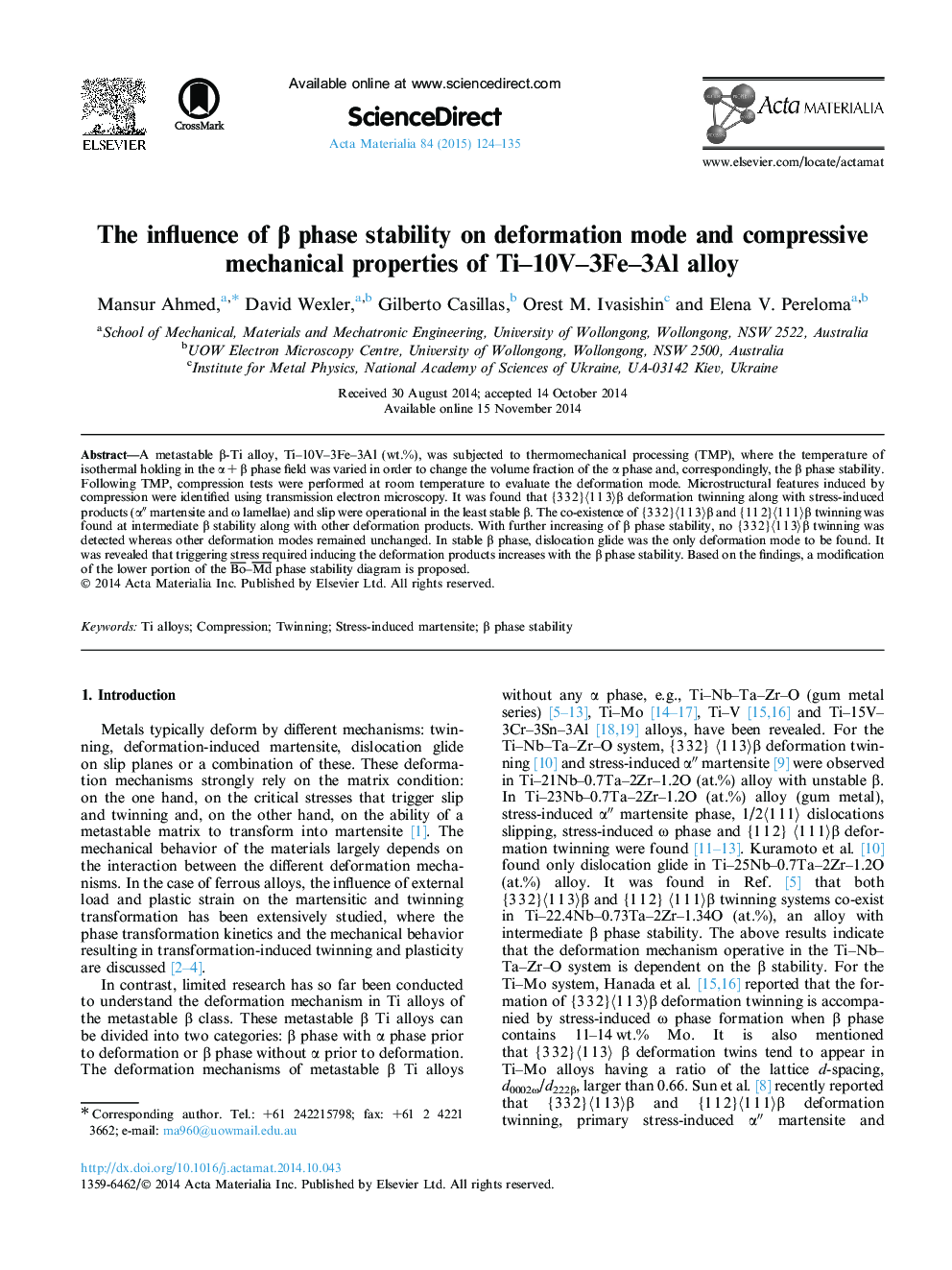| Article ID | Journal | Published Year | Pages | File Type |
|---|---|---|---|---|
| 1445421 | Acta Materialia | 2015 | 12 Pages |
A metastable β-Ti alloy, Ti–10V–3Fe–3Al (wt.%), was subjected to thermomechanical processing (TMP), where the temperature of isothermal holding in the α + β phase field was varied in order to change the volume fraction of the α phase and, correspondingly, the β phase stability. Following TMP, compression tests were performed at room temperature to evaluate the deformation mode. Microstructural features induced by compression were identified using transmission electron microscopy. It was found that {3 3 2}〈1 1 3〉β deformation twinning along with stress-induced products (α″ martensite and ω lamellae) and slip were operational in the least stable β. The co-existence of {3 3 2}〈1 1 3〉β and {1 1 2}〈1 1 1〉β twinning was found at intermediate β stability along with other deformation products. With further increasing of β phase stability, no {3 3 2}〈1 1 3〉β twinning was detected whereas other deformation modes remained unchanged. In stable β phase, dislocation glide was the only deformation mode to be found. It was revealed that triggering stress required inducing the deformation products increases with the β phase stability. Based on the findings, a modification of the lower portion of the Bo‾–Md‾ phase stability diagram is proposed.
